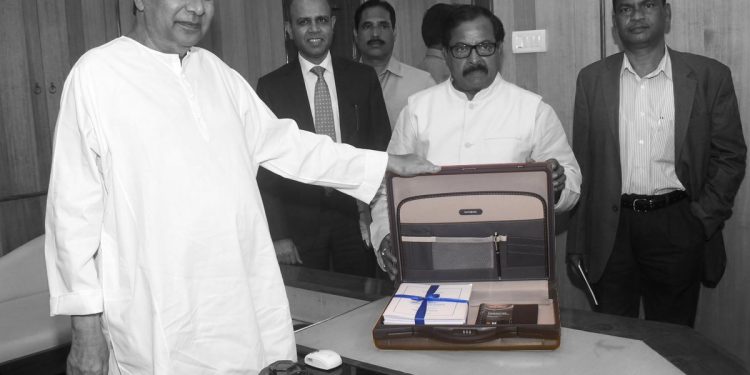Santosh Kumar Mohapatra
Odisha Finance Minister Shashi Bhusan Behera, February 7, presented a Vote-on-Account of Rs 56,921 crore. According to the minister, instead of presenting a full‐fledged budget, he proposed to seek a Vote‐on‐Account to defray the expenditure on existing establishments and continuing schemes and projects from April to July, 2019.
The minister has done right thing by not presenting a full budget unlike the central government. But unfortunately, he, too, could not desist from glorifying his own government as had happened with the interim budget of the Centre. Also, the state, too, did not present the economic survey, which is wrong.
The minister highlighted growth the state has achieved. But it is not reflected in the size of the budget, which appears to be contractionary. The estimated outlay for budget-2019-20 is only 10.4 per cent over the outlay for the previous fiscal, which was Rs 1,20,028 crore.
Last September, the finance minister had presented a supplementary budget for Rs 12,790 crore. Therefore, the total budget amount for the 2018-19 (RE) should be to Rs 1,32,818 crore. But budget-related documents show that the revised budgetary outlay for 2018-19 was only Rs 1,20,125 crore, which is only Rs 97 crore over the estimated budgetary outlay. It means the supplementary budget has become redundant.
Although other states do the same thing, one good thing about Odisha is that it fails to spend only 6 per cent of budgetary outlay, while other states average 9 per cent. It is also ethical that unlike the central government, the state government has not introduced any new scheme in the vote on account and allocated resources to schemes declared earlier.
The government has allocated Rs 4,461 crore for KALIA, Rs 2,935 crore for Basudha, Rs 2,120 for Madhubabu Pension Yojana, Rs 1,777 crore for Parvati Giri Mega Life irrigation scheme and Rs 1,465 crore for irrigation sector infrastructure development, among other things.
The outlay for agriculture budget has been fixed at Rs 19,557 crore in 2019-20. The minister said this is an increase by 173 per cent compared with the first Agriculture Budget presented in 2013‐14 with outlay of Rs7,162 crore. But the comparison should have been made with the outlay of the previous year, which was Rs 16,765 crore. That means the increase is only about 16 per cent. But the state has allocated about 14 per cent of its total budget towards agriculture and allied activities. This is higher than allocations by many other states.
But the state remains dependent on others for agricultural produce and fish, and farmers here have inadequate storage facilities. Irrigation is also not up to the mark. It is, therefore, worrying that capital expenditure has been cut to rein in fiscal deficit. The revised estimate is at Rs 28,797.15 crore for 2018-19 as against budget estimate of Rs 29,808 crore. It is estimated to be only Rs 30,382.79 crore in 2019-20 which indicates negative growth, taking inflation into account.
The vote on account also does not reflect optimism for generation of the state’s own resources. Odisha’s tax-to-GSDP ratio, which was 3.56 per cent in 1999‐2000, increased to 6.42 per cent in 2017‐18. But it is estimated to be 6.10 per cent in 2019‐20. The 13th Finance Commission has recommended that tax-to-GSDP ratio should be at least 6.75 per cent.
Similarly, state’s own revenue as percentage of GSDP was 7.68 per cent in 2005-06. It reached record high of 9.51 per cent in 2015-16 and has revolved around 8.3 per cent over the last three years and is estimated to be 8.32 per cent in 2019-2020. It means the state has to explore new avenues to raise resources. However, it is better that states maintain an average of 8 per cent on this count.
Though fiscal prudence has been maintained, signs of fiscal stress are reflected in the gradual rise of debt-to-GSDP and interest payments-to–revenue-receipt ratios. On the jobs front, though a vote on account offers little scope, no attempt has been made to fill vacancies, especially in the health and education sectors.
The writer is an Odisha-based economist. e-Mail: skmohapatra67@gmail.com






































